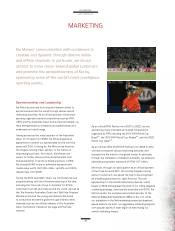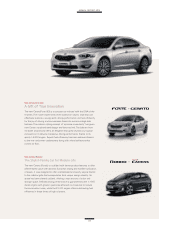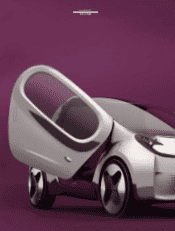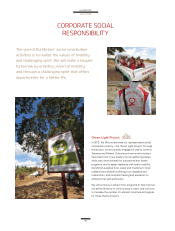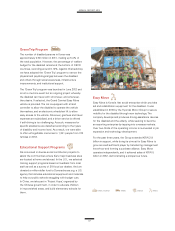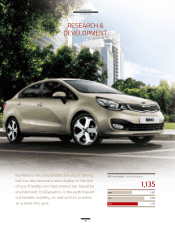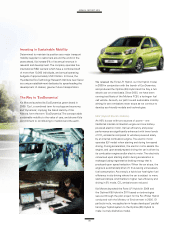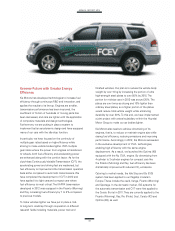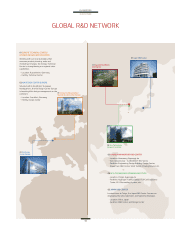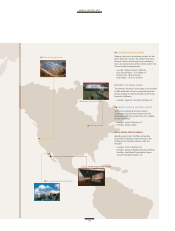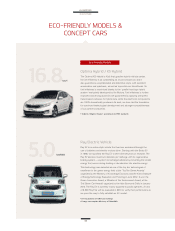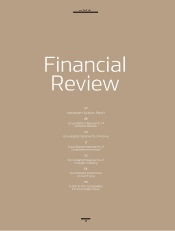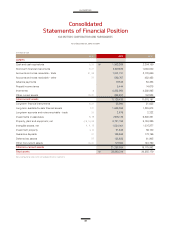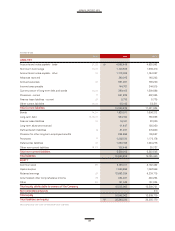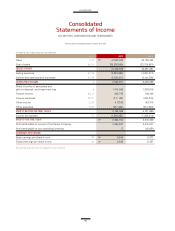Kia 2012 Annual Report Download - page 40
Download and view the complete annual report
Please find page 40 of the 2012 Kia annual report below. You can navigate through the pages in the report by either clicking on the pages listed below, or by using the keyword search tool below to find specific information within the annual report.
EV (Electric Vehicle)
An electric vehicle is powered by an electric motor alone.
It can be recharged within six hours with slow charging
equipment, and within 25 minutes with fast charging
equipment. An EV runs on energy supplied to the motor
from high-pressure batteries that store electric energy.
Since only electric energy is used, the model has zero
emissions as it emits no direct CO
2
. However, EVs have
some setbacks including the presence of CO
2
within its
fuel cycle as most domestic electricity is produced from
fossil fuels, long recharging hours compared to internal
combustion-powered cars, and a lack of recharging
infrastructure.
Driven by consistent investment in order to commercialize
electric vehicles, we developed the Besta EV in 1986 and
Sportage EV in 1999. We also launched the Ray EV, our
first commercialized full-electric vehicle, in 2011 in the
Korean market. Guided by the goal of mass producing
compact electric vehicles for ordinary customers in 2014,
we plan to test 2,500 Ray EVs to verify their
performance
and establish the basis for an EV market.
FCEV (Fuel Cell Electric Vehicle)
One fundamental approach to environmental protection
is to develop cars powered by alternatives to fossil fuels.
An FCEV is powered by fuel cells that produce electricity
through the combination of oxygen found in the air
and hydrogen. An FCEV emits no emissions except
for water, making it a genuinely eco-friendly car and a
solution to environmental concerns.
FCEVs are an area of strength for Kia Motors. Since
our development of fuel cell technologies in 1998, we
have participated in a pilot project for fuel cell cars
organized by the Department of Energy in the U.S.
since 2004. In 2009, we successfully developed the
Mohave FCEV model that provides the world’s highest
level of propulsion power at 115kW, and is equipped
with a Supercapacitor – a next-generation energy
storage device. After a single charge, it can be driven up
to 690 km at a speed of up to 160km/h. Its durability,
technological prowess and practicality were proven by
the successful completion of the ‘Hydrogen Road Tour
2009’, a 2,655 km practical road test from San Diego, U.S.
to Vancouver, Canada.


